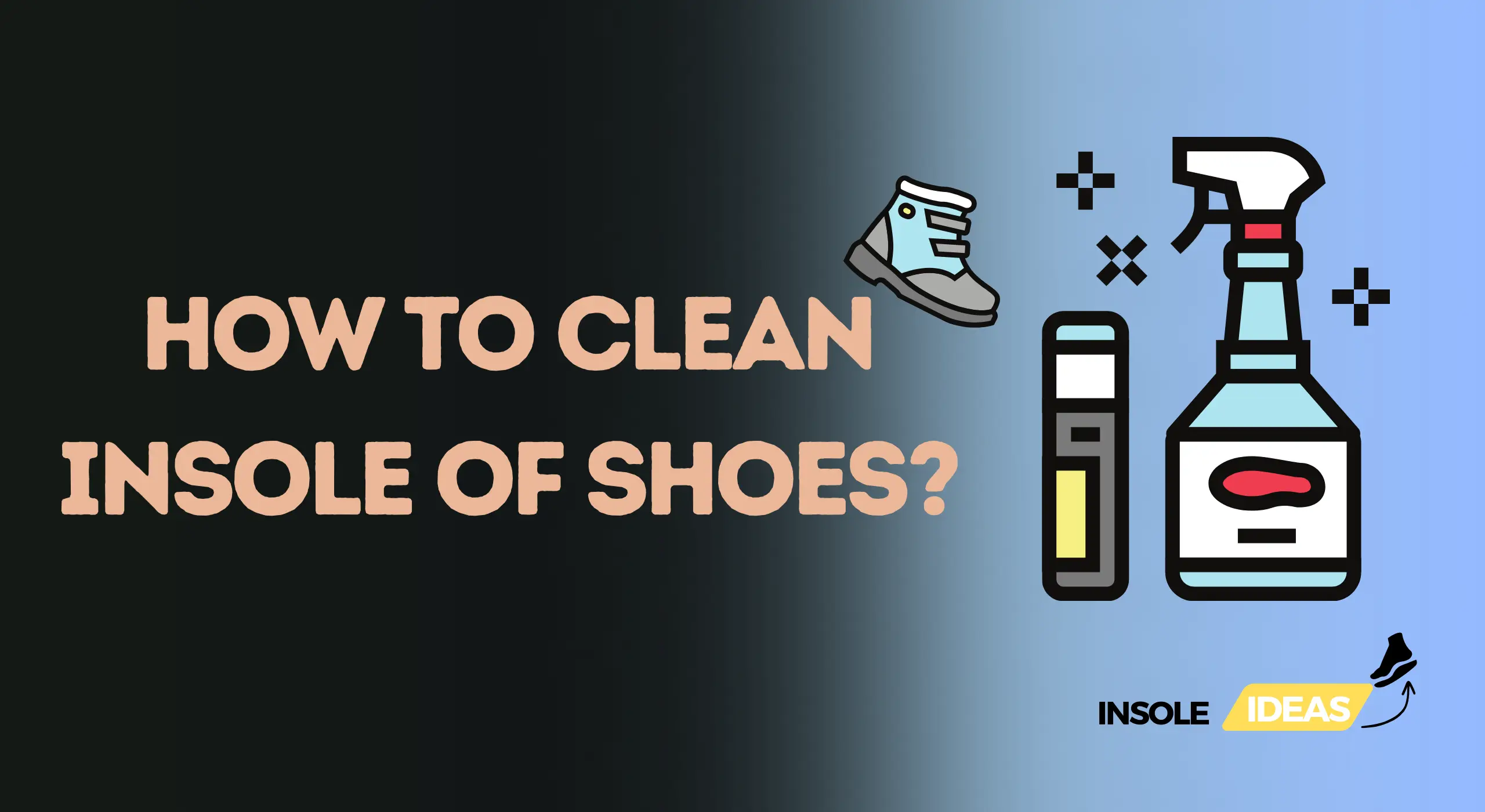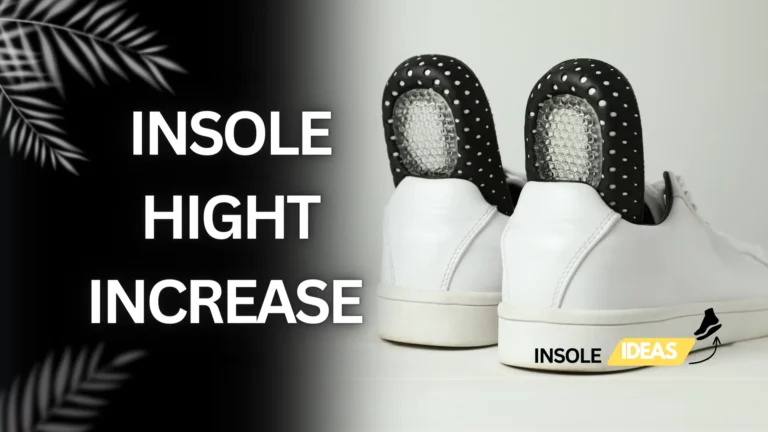How to Clean Insole of Shoes?
Clean insoles are essential not only for maintaining good hygiene but also for ensuring maximum comfort while wearing shoes. Over time, insoles accumulate dirt, sweat, and bacteria, leading to unpleasant odors and potential foot health issues. Therefore, knowing how to effectively clean insoles is crucial for everyone, especially those who prioritize foot care and overall well-being.
Understanding Insole Cleaning
Importance of Clean Insoles
Clean insoles play a crucial role in maintaining optimal foot health and overall comfort. When insoles are dirty or contaminated, they become breeding grounds for bacteria and fungi, leading to unpleasant foot odor and potentially causing infections or skin irritations. Moreover, dirty insoles can compromise the structural integrity of shoes over time, reducing their lifespan. Therefore, regular cleaning of insoles is essential to preserve both hygiene and comfort.
Types of Insoles
Insoles come in various materials, each requiring specific cleaning methods to ensure effective maintenance. Common insoles include foam, gel, and leather variants, each with unique characteristics and cleaning considerations. Foam insoles, for instance, are prone to absorbing sweat and odors, necessitating thorough cleaning and drying methods. Gel insoles, on the other hand, require gentle cleaning to prevent damage to the gel-filled compartments. Leather insoles demand special care to preserve their quality and prevent deterioration over time. Understanding the distinct properties of each type of insole is crucial for determining the most suitable cleaning approach.
Preparing for Cleaning
Removing the Insoles
Before starting the cleaning process, it’s crucial to safely remove the insoles from your shoes. Begin by loosening the edges of the insoles gently to prevent any tearing or damage. If the insoles are removable, carefully pull them out of the shoes using your fingers or a flat tool. Be cautious not to force the insoles out, especially if they are glued in, as this can cause irreversible damage to both the insoles and the shoe lining. Take your time to identify whether the insoles are removable or glued in to proceed with the appropriate removal technique.
Gathering Cleaning Supplies
To effectively clean your insoles, gather the necessary cleaning supplies beforehand. You’ll need mild detergent, warm water, a soft brush or cloth for scrubbing, and a towel for drying. Additionally, consider using household items such as baking soda or vinegar for natural deodorizing effects. For specialized cleaning, invest in products designed specifically for the material of your insoles, such as foam, gel, or leather. These products may include foam cleaners, leather conditioners, or antibacterial sprays tailored to maintain the integrity of your insoles while effectively cleaning them.
Cleaning Methods
Hand Washing
Hand washing is a gentle and effective method for cleaning insoles, particularly for delicate materials. Start by preparing a mild detergent solution and warm water in a basin or sink. Submerge the insoles in the solution and use a soft brush or cloth to scrub away dirt and stains gently. Pay close attention to areas with heavy buildup, such as the heel and arch areas. Once clean, rinse the insoles thoroughly with clean water to remove any soap residue. Finally, pat the insoles dry with a towel and allow them to air-dry completely before reinserting them into your shoes.
Machine Washing
Machine washing can be a convenient option for cleaning insoles, especially if they are heavily soiled. Before placing the insoles in the washing machine, ensure they are compatible with machine washing and won’t be damaged by the process. Place the insoles in a mesh laundry bag or pillowcase to protect them during the wash cycle. Use a gentle detergent and set the washing machine to a delicate or low-temperature cycle to prevent damage to the insoles. Once washed, remove the insoles from the laundry bag or pillowcase and allow them to air-dry thoroughly before reusing them.
Deodorizing and Disinfecting
Removing Odors
Odor removal is an essential step in cleaning insoles to maintain freshness and hygiene. Natural remedies such as sprinkling baking soda or applying vinegar can help neutralize odors effectively. Alternatively, consider using commercial deodorizing products specifically designed for shoe insoles. These products often contain ingredients that target odor-causing bacteria, leaving your insoles smelling clean and fresh. To prevent future odor buildup, ensure your shoes and insoles are thoroughly dry before wearing them again, and consider using odor-absorbing inserts or sachets.
Disinfection Techniques
Disinfecting your insoles is vital for eliminating bacteria and fungi that can cause foot infections or odors. Consider using antifungal sprays or UV sanitizers to kill germs effectively. These products can penetrate deep into the material of the insoles, providing long-lasting protection against microbial growth. Additionally, regular disinfection should be part of your shoe maintenance routine to ensure optimal foot health. Choose disinfecting agents that are safe for the material of your insoles and follow the manufacturer’s instructions carefully for best results.
Drying and Replacing Insoles
Properly drying and occasionally replacing insoles are vital steps in maintaining clean and comfortable footwear. In this section, we’ll explore effective drying methods to prevent mold and mildew, as well as considerations for determining when it’s time to replace your insoles.
Drying Methods
After cleaning your insoles, it’s essential to dry them thoroughly to prevent moisture-related issues like mold and mildew. Air drying is a safe and effective method, allowing the insoles to naturally dry out. Remove the insoles from your shoes and place them in a well-ventilated area away from direct sunlight. Ensure both sides of the insoles are exposed to airflow to facilitate even drying. Alternatively, you can use a fan to speed up the drying process while maintaining adequate ventilation. Avoid using heat sources such as hairdryers or heaters, as excessive heat can damage the insole materials.
Replacement Considerations
While regular cleaning can extend the lifespan of your insoles, there comes a time when replacement is necessary. Signs indicating the need for replacement include visible signs of wear and tear, such as flattened cushioning or visible deterioration of the material. If your insoles no longer provide adequate support or comfort, it’s likely time to replace them. Additionally, persistent odor or hygiene issues despite thorough cleaning may indicate that the insoles are beyond salvageable and should be replaced.
Several factors influence the lifespan of insoles, including the quality of materials, frequency of use, and individual foot mechanics. High-quality insoles made from durable materials tend to last longer than cheaper alternatives. If you lead an active lifestyle or engage in activities that subject your shoes to excessive wear, you may need to replace your insoles more frequently. Furthermore, individuals with specific foot conditions may require specialized insoles that wear out faster than standard ones.
When selecting replacement insoles, prioritize quality and compatibility with your footwear. Look for insoles that offer adequate cushioning, arch support, and breathability to ensure maximum comfort and foot health. Consider consulting a podiatrist or footwear specialist for personalized recommendations based on your unique foot anatomy and activity level.
Conclusion
Regular cleaning of shoe insoles is essential for maintaining optimal hygiene and comfort. By following the methods outlined in this article, readers can effectively clean their insoles and prolong their lifespan. Incorporating insole cleaning into your footwear maintenance routine not only enhances comfort but also contributes to overall foot health and hygiene.





